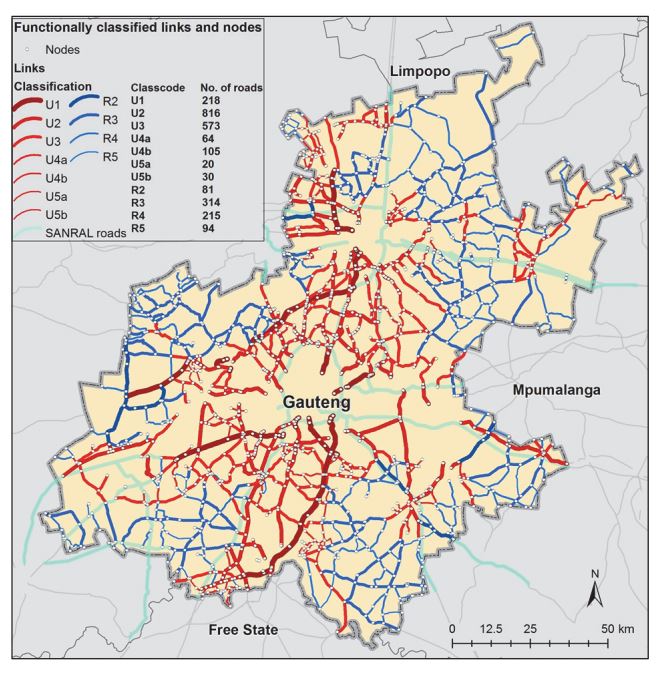Functional classification of the Gauteng provincial road network
Using the South African road classification and access management manual (TRH26)

The built environment consists of various land uses and activities connected by a road network. The efficiency and effectiveness of the road network directly impacts economic growth and societal movement. This study involved the functional classification of the Gauteng provincial road network using the South African Road Classification and Access Management Manual (TRH26) as a guideline. In combination with high resolution up-to-date satellite reference imagery, dwelling and building inventories, road centrelines and other base layers, it was found that the TRH26 provided a well-structured approach to classifying the provincial road network according to the functional properties of each road link.
It resulted in an accurate spatial representation of the current Gauteng provincial road network when using an appropriate geographic information system - providing a wealth of formal and technical information regarding each road and street via the comprehensive attribute database. At link level it was possible to synchronise the upgraded network with the financial asset registry in order to gauge the current state of the provincial roads within Gauteng, and to identify those that are in need of attention and/or rehabilitation to optimise efficiency and safety. This approach can be standardised throughout the country to make inferences to road safety, speed regulation, driver behaviour, traffic studies and accessibility to services.


Comments